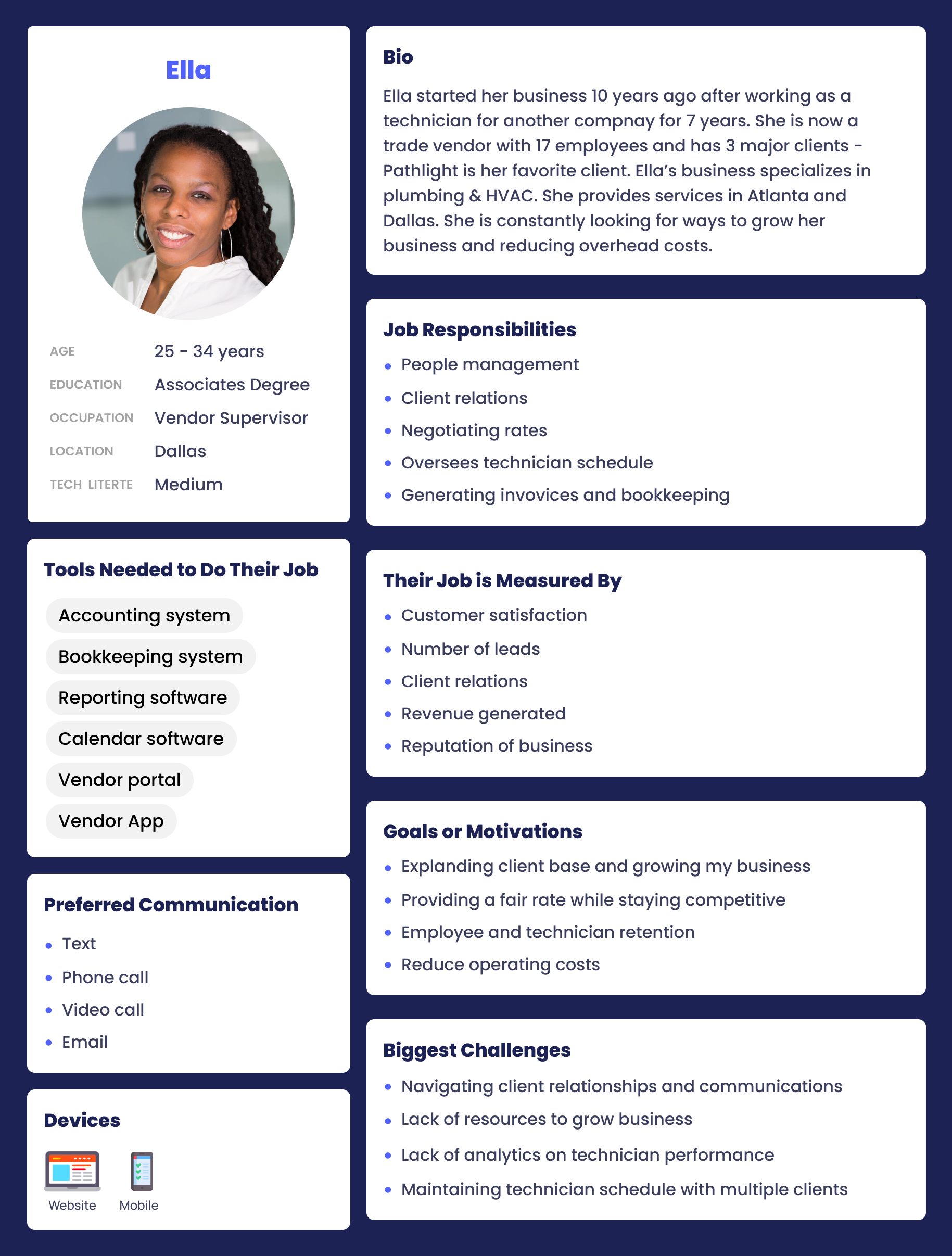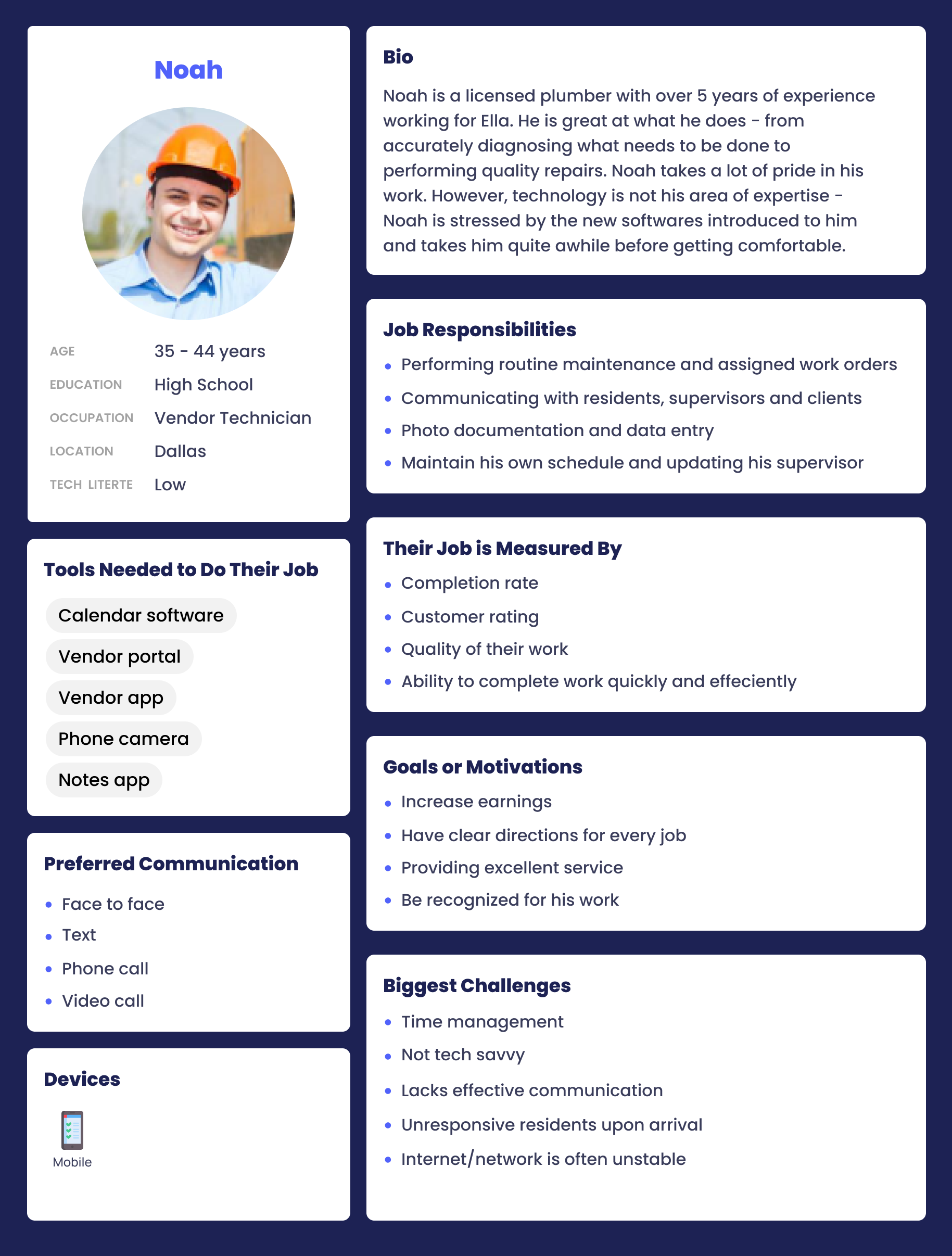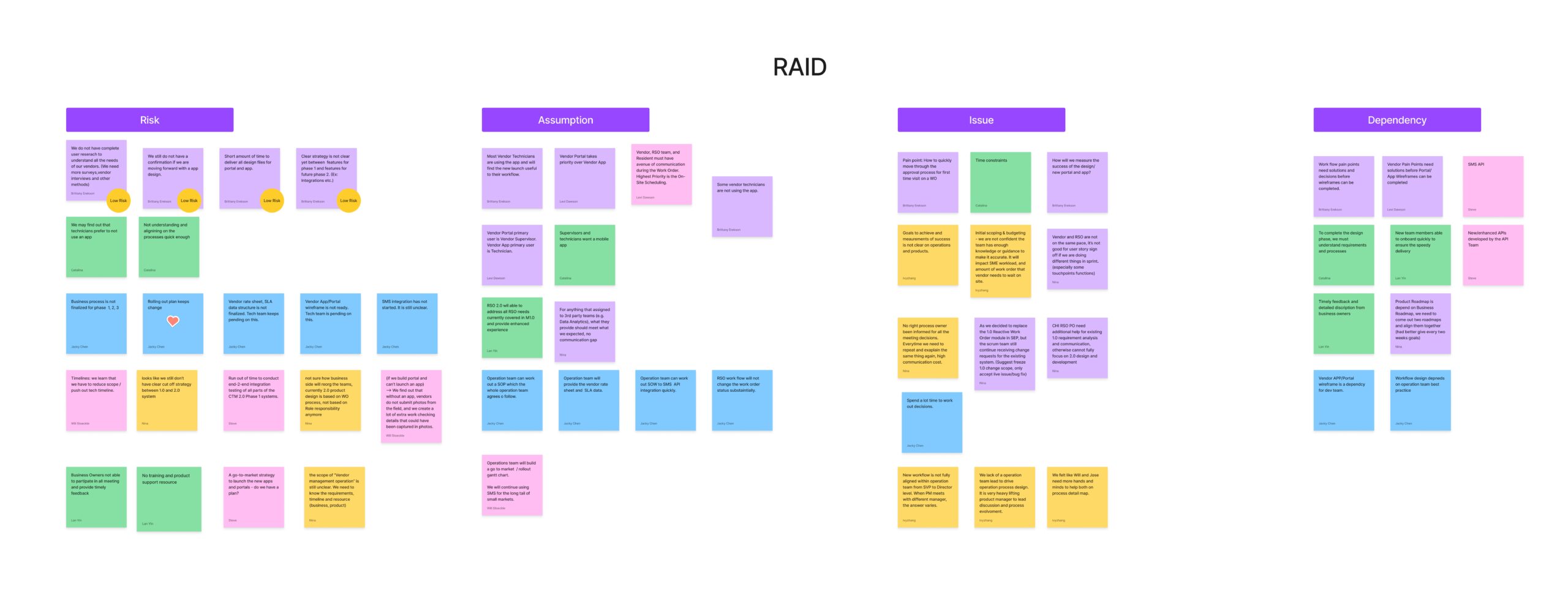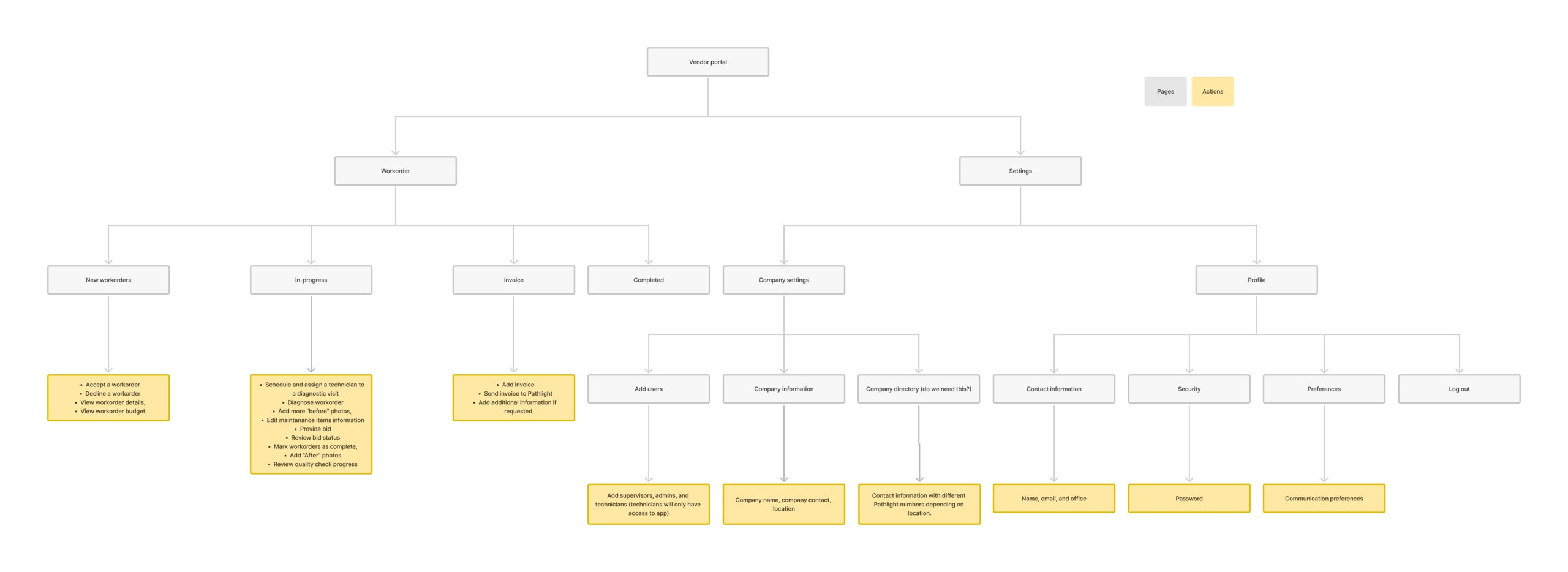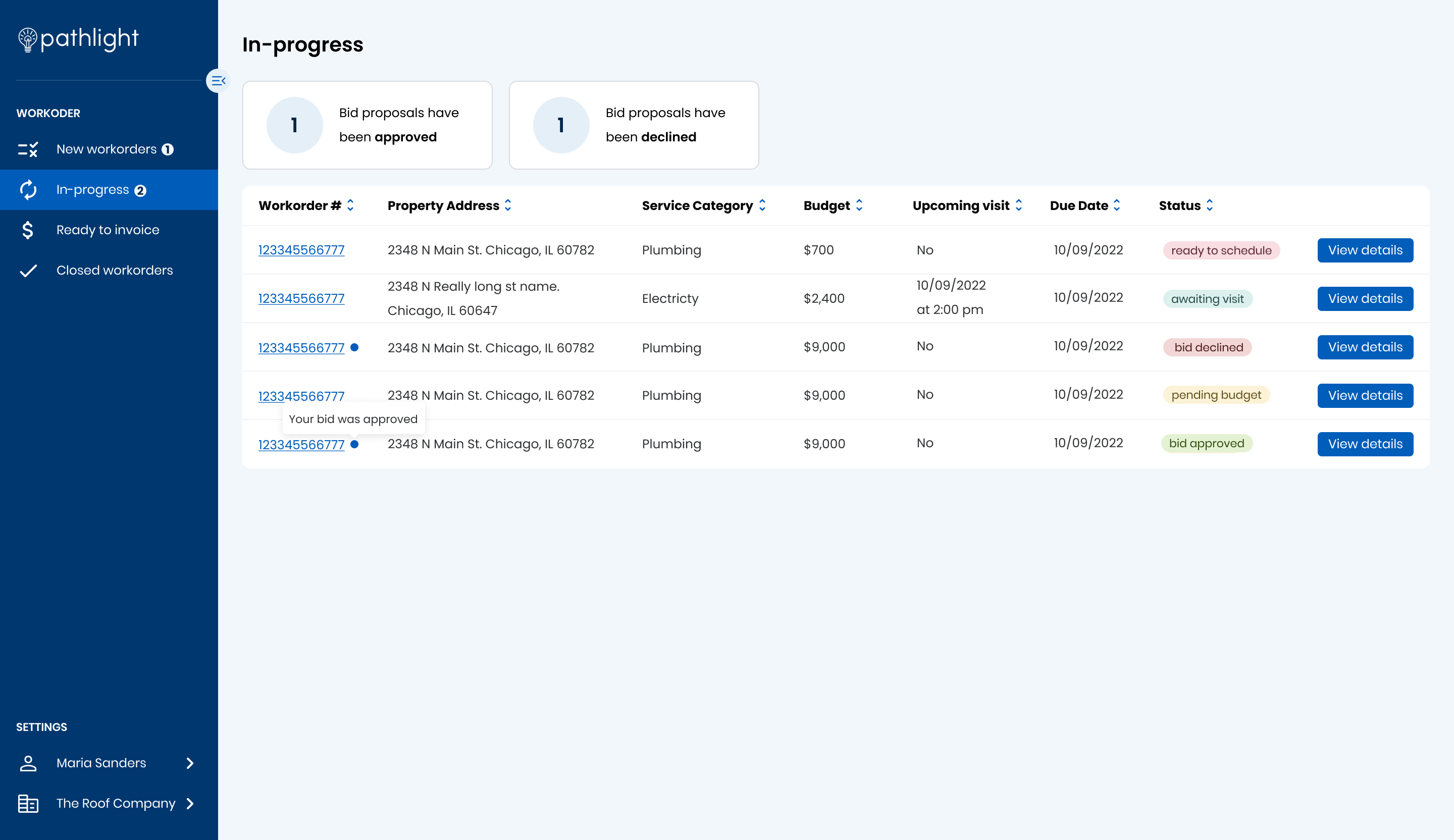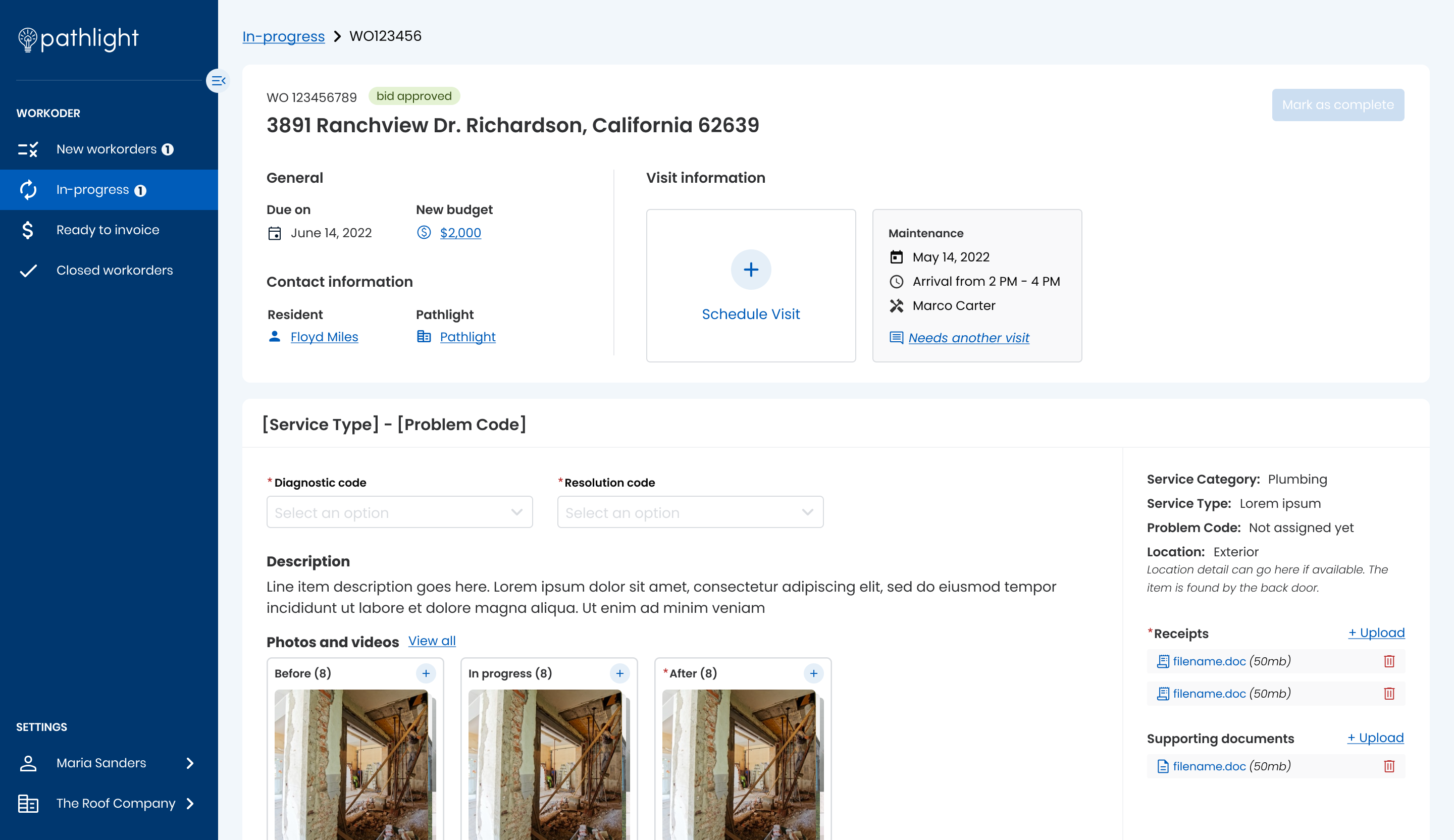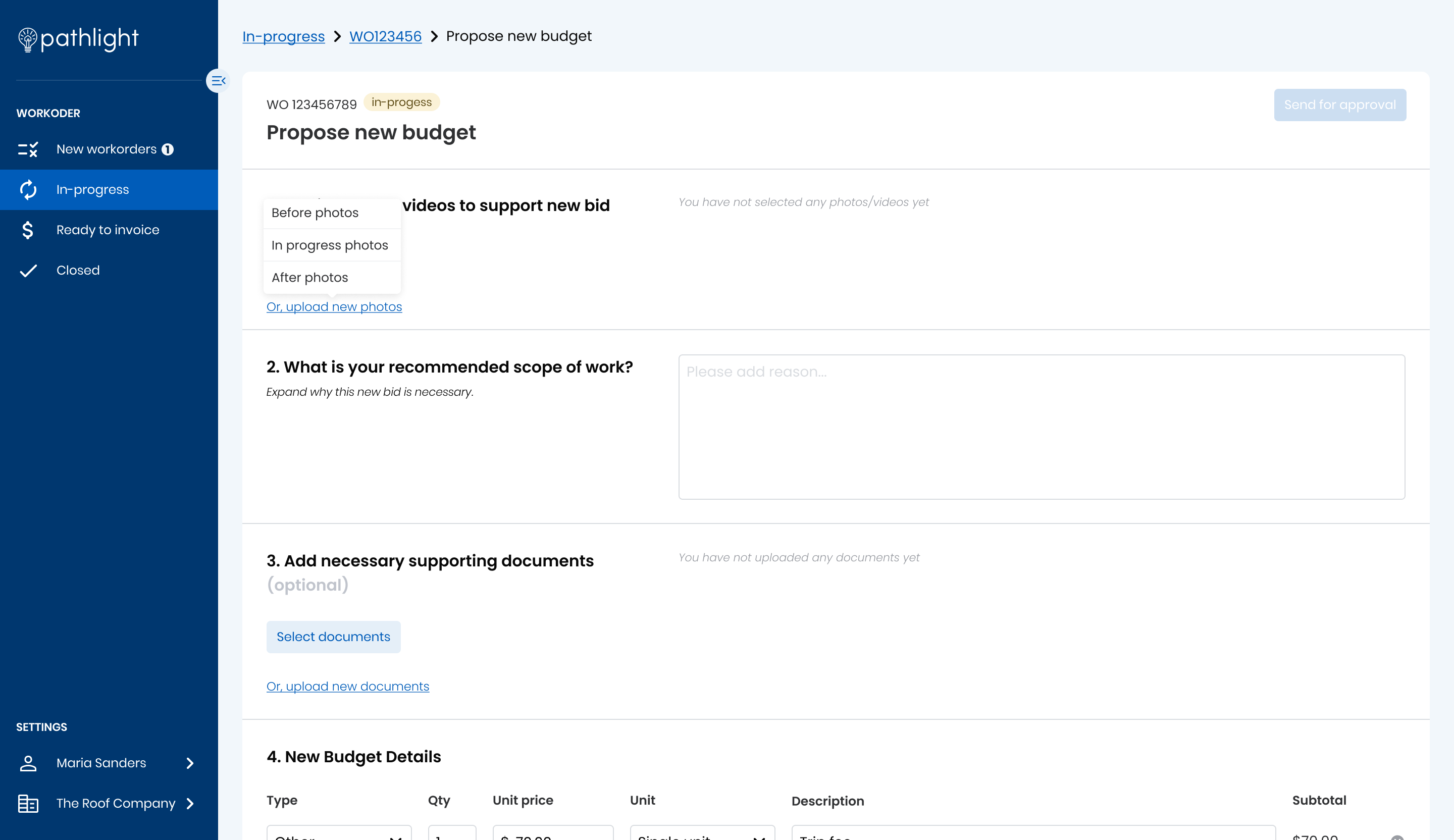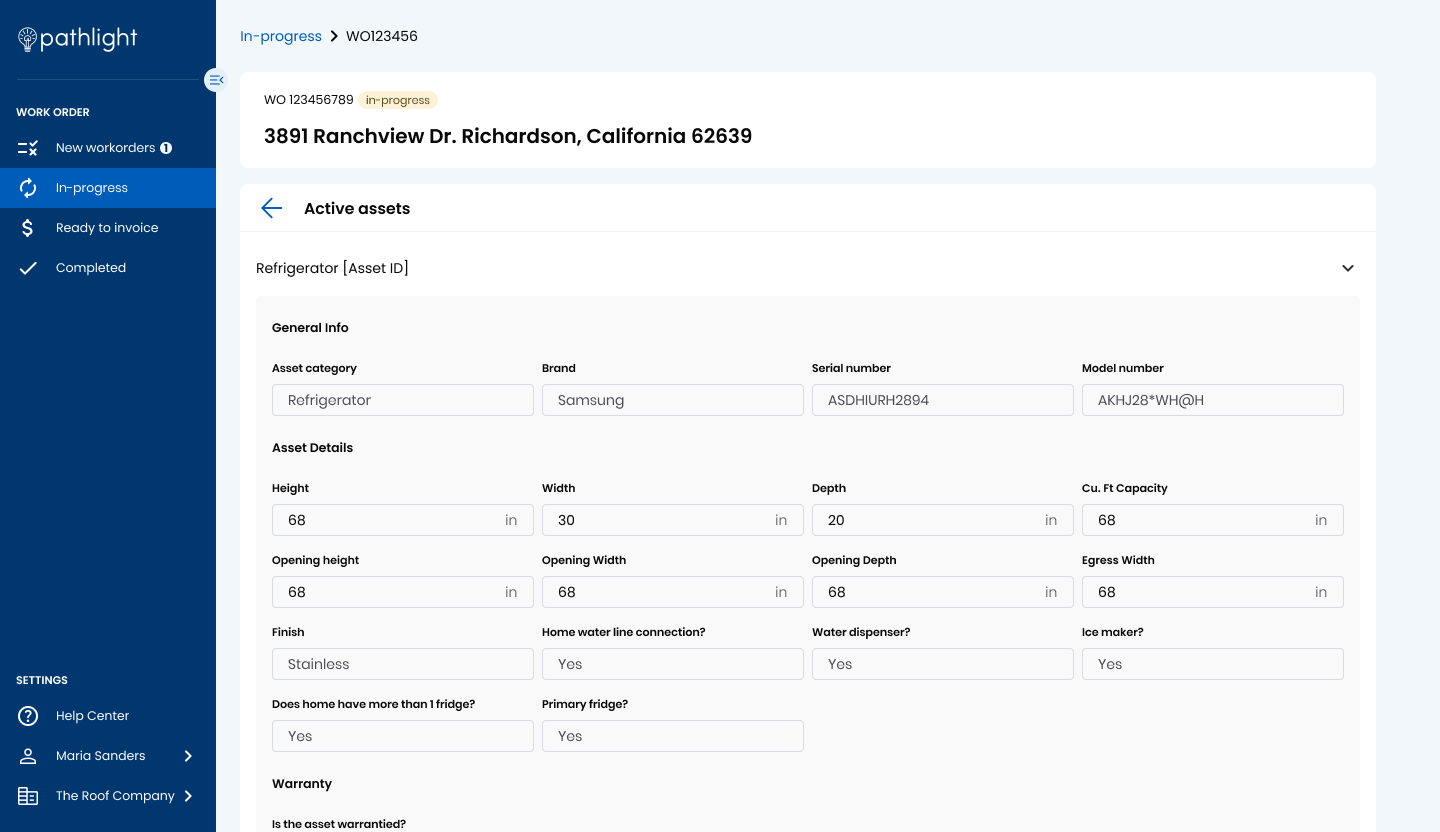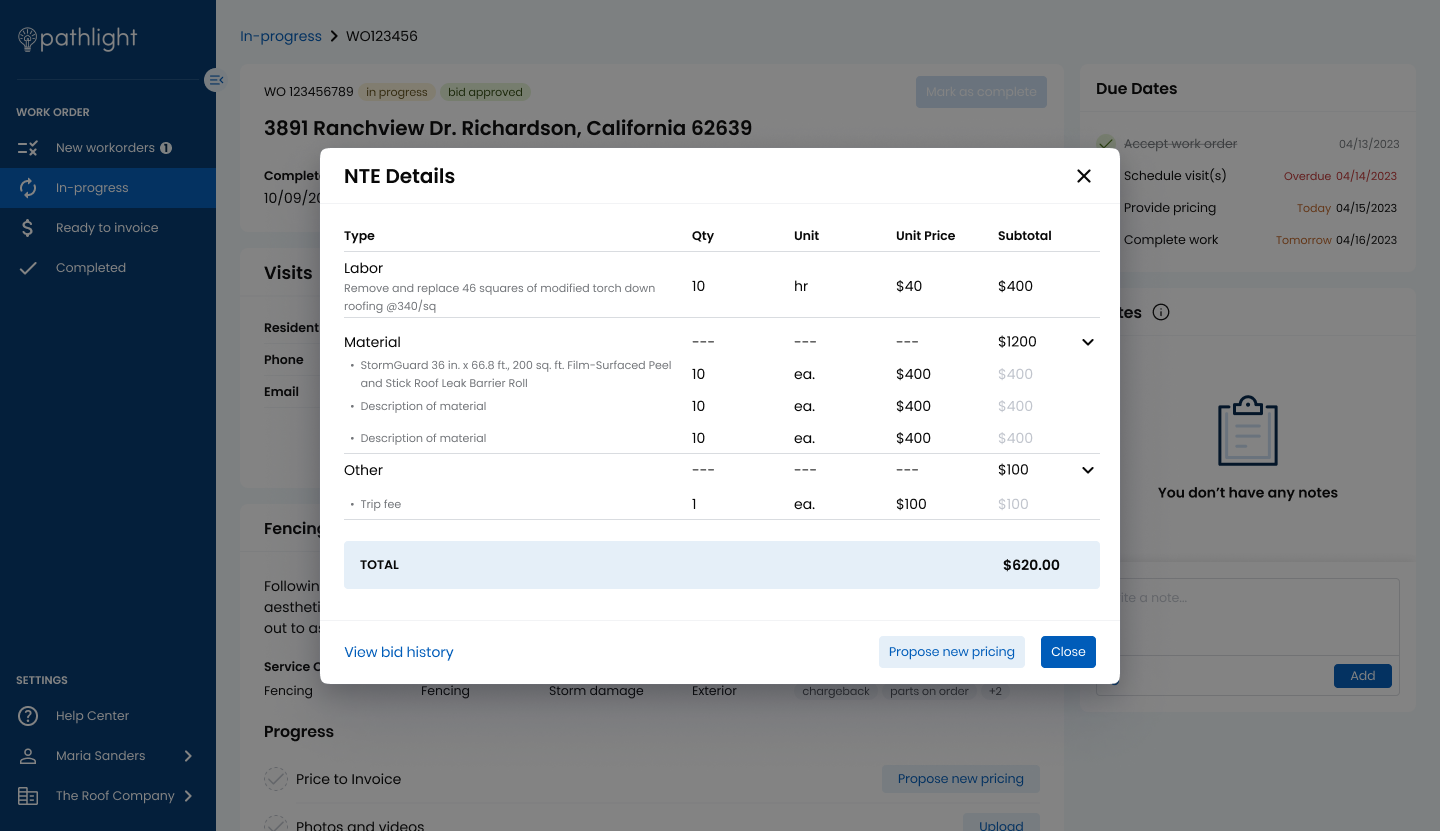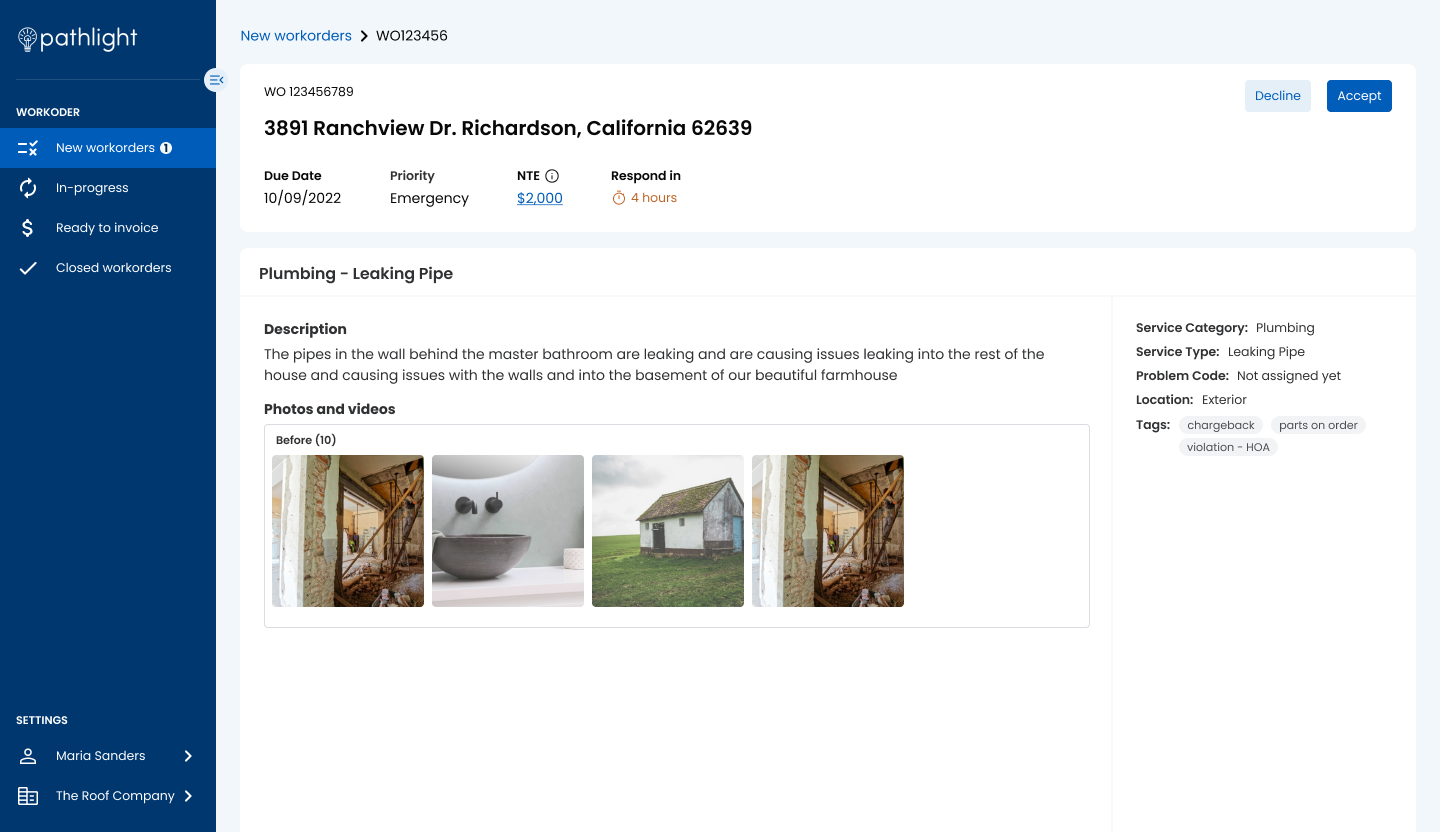CASE STUDY
Vendor Portal
To save millions and improve efficiency, a custom Vendor Portal was developed to replace a costly third-party system used by a property management company overseeing 17,000+ properties. Designed to streamline the management of maintenance issues reported by residents, the portal enhanced workflows, vendor accountability, and resident satisfaction through a user-focused, research-driven approach.
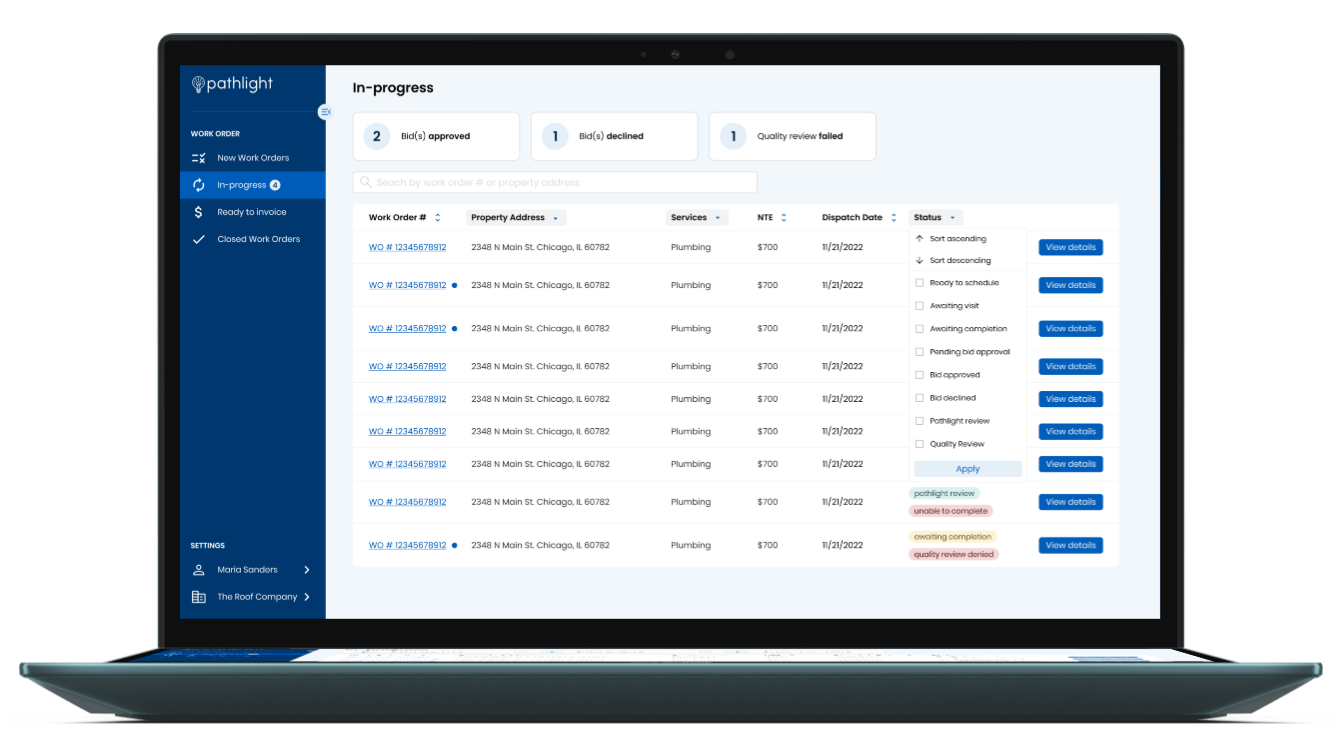
TEAM
Scrum Master
Product Manager (USA & China)
UX Lead (Me)
UX Designer (USA)
Front End (China)
Back End (China)
QA (China)
Business Analyst (China)
UX/UXR methods:
Interviews
Personas
How Might We?
RAID
Surveys
Information Architecture
Wireframes
Prototypes
Usability Testing
Data Annalysis
Hotjar Feedback
Tools
Jira
Figjam
Figma
Dovetail
Hotjar
Userlytics
SurveyMonkey
PowerBi
Zoom/Teams
Timeframe:
4 months to launch – ongoing iterations
Problem:
A company that owns over 17,000 properties was using a costly third party agency to coordinate the repair of maintenance issues their residents were facing. Developing their own system will allow them to potentially save 22.4 million, and have more control over their residents experiences while repairing problems.
✅ Value creation
Cost savings potential up to 28% on $80 million
We rely on a third party to manage our residents maintenance issues. This comes at a high cost.
Improve vendor experience
1. Flying blind without pictures or residents availability.
2. Streamlined workflows and improve communication and expectations.
Improve resident experience
1. Better quality checks
2. Improve communication
3. Vendor’s accountability
⁉️ Some challenges
New team members
The team was very new, and there was a lot of background foundational information to learn.
Time constraints
This project was key to secure an investment and had to be fully completed in 4 months, including research, design, testing, development, and UAT.
Lack of initial requirements
The PM joined the project a little later, and we didn’t have requirements to work on, only a general goal.
The process
Empathize
Define
Ideate
Prototype
Test
First, we got to know our users
To kick off the project, we reviewed the third-party software that we used, plus our competitors to identify key features. We also interviewed our internal teams that work with the third-party provider and vendors on a daily basis to understand their perspective on what would be the priority for MVP. We also interviewed 5 vendor companies to understand their needs and wants.
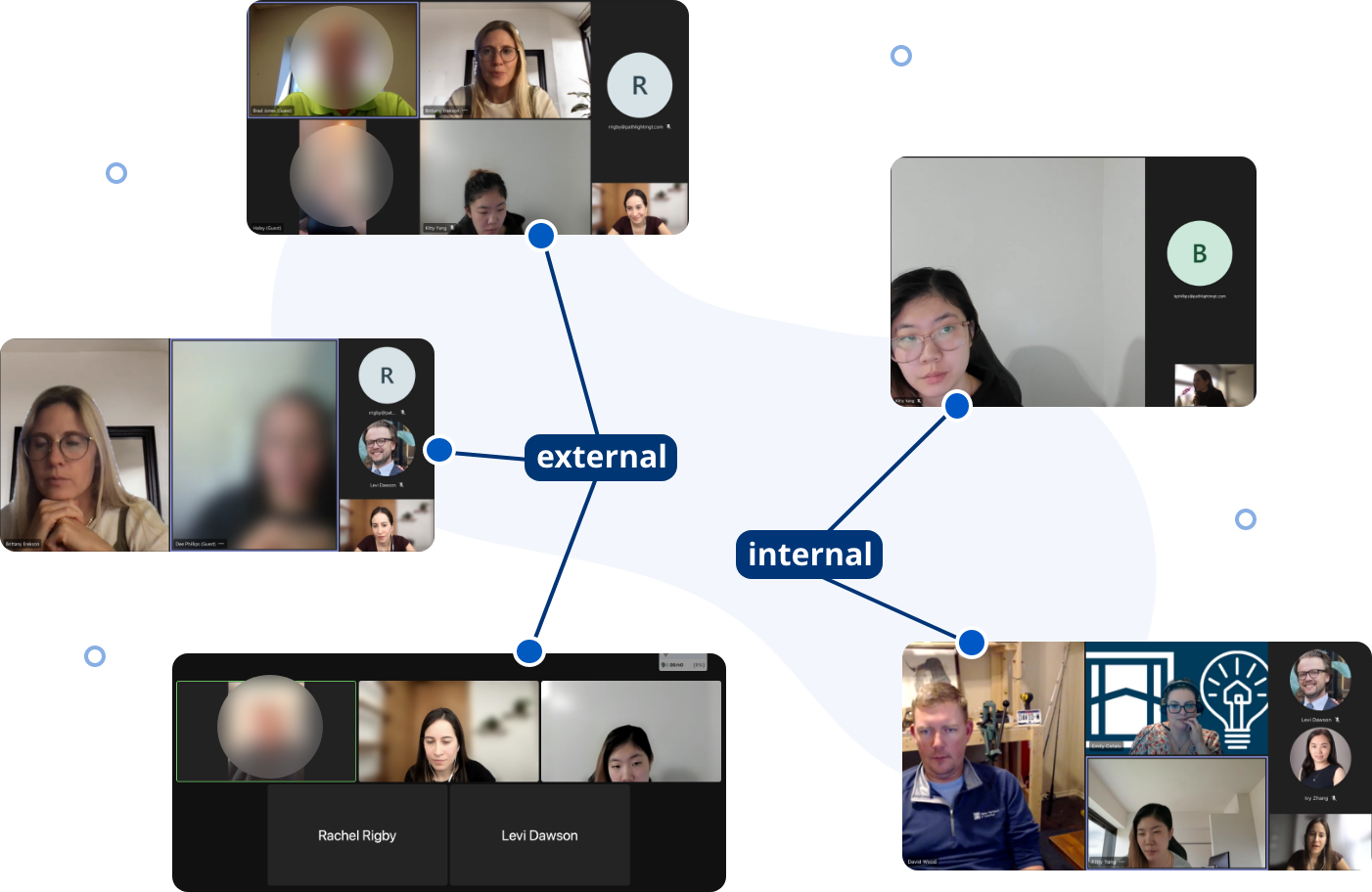
We drafted personas for alignment
From the research, we discovered two different personas:
How can we help?
From the interviews, we uncovered many pain points. Some related to our internal system and some to the vendor portal. For this project, we will focus on the vendor portal only.
The most recurrent pain points were:
- Some technicians don’t have internet service during home visits
- Technicians and residents would like to finish a project in one visit if possible
- The approval process blocks technicians from starting work, even small ones
- Email communication can get lost and not followed up in a timely manner
As a team, we went through the “How Might We” exercise to ideate ways for how we can provide meaningful solutions to our vendors.
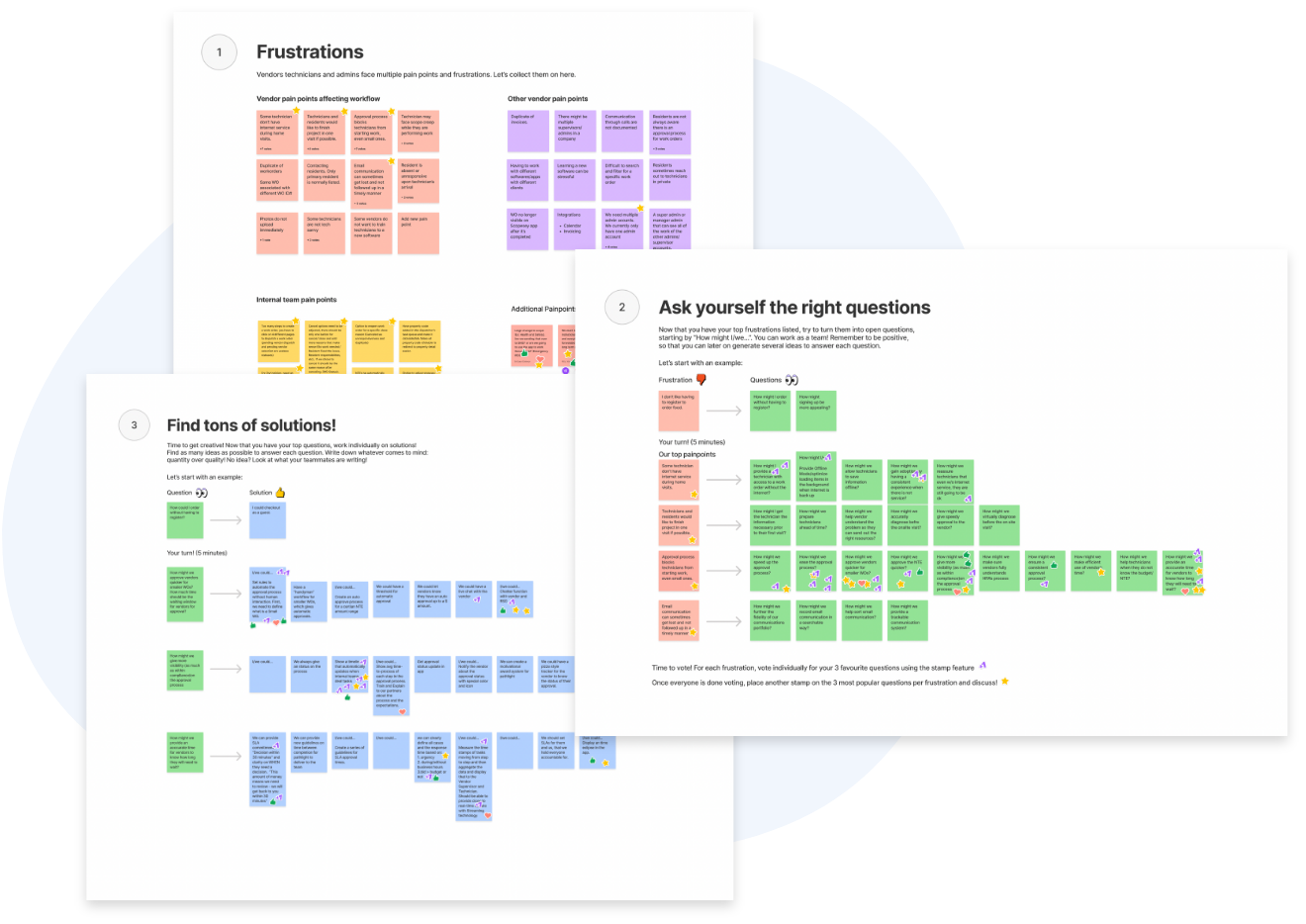
Are we on track?
At this point the team gathered to assess the risks, assumptions, issues and dependencies to ensure we were all aligned and on track.
From this exercise we uncovered many points to consider, including the risk of spending too much money and time building a required mobile app for MVP for technicians that are not tech savvy and might not adopt technology.
Mitigating the risk and confirming assumptions
To understand the likelihood of technicians adopting the technicians’ app, we surveyed 20 vendor companies.
We confirmed that approximately 58% of technicians don’t use our third-party provider mobile app.
Reasons why technicians didn’t adopt our mobile app included:
- Training technicians require a lot of time
- Technicians are not tech savvy
- Technicians prefer to communicate via phone calls and texts
With this information, we decided that for MVP we it would be too risky to create a mobile app. Instead we will adapt the web app for mobile including limited functionality and making it optional for technicians.
We visualize the idea with wireframes and prototypes
We created a desktop web-app with full functionality for supervisors and we adapted it to mobile with limited functionality for technicians.
And then we tested it
We tested our design with 6 vendors and 6 technicians. Some of their feedback included:
Some of the recommendations:
- Show residents information right away instead of on hover only.
- Revise the add a photo button. It needs to be more visible and intuitive
- Give feedback on why buttons are disabled.
- Revise scheduling modal
- State clearly the requirements that vendors need to submit before completing a work order.
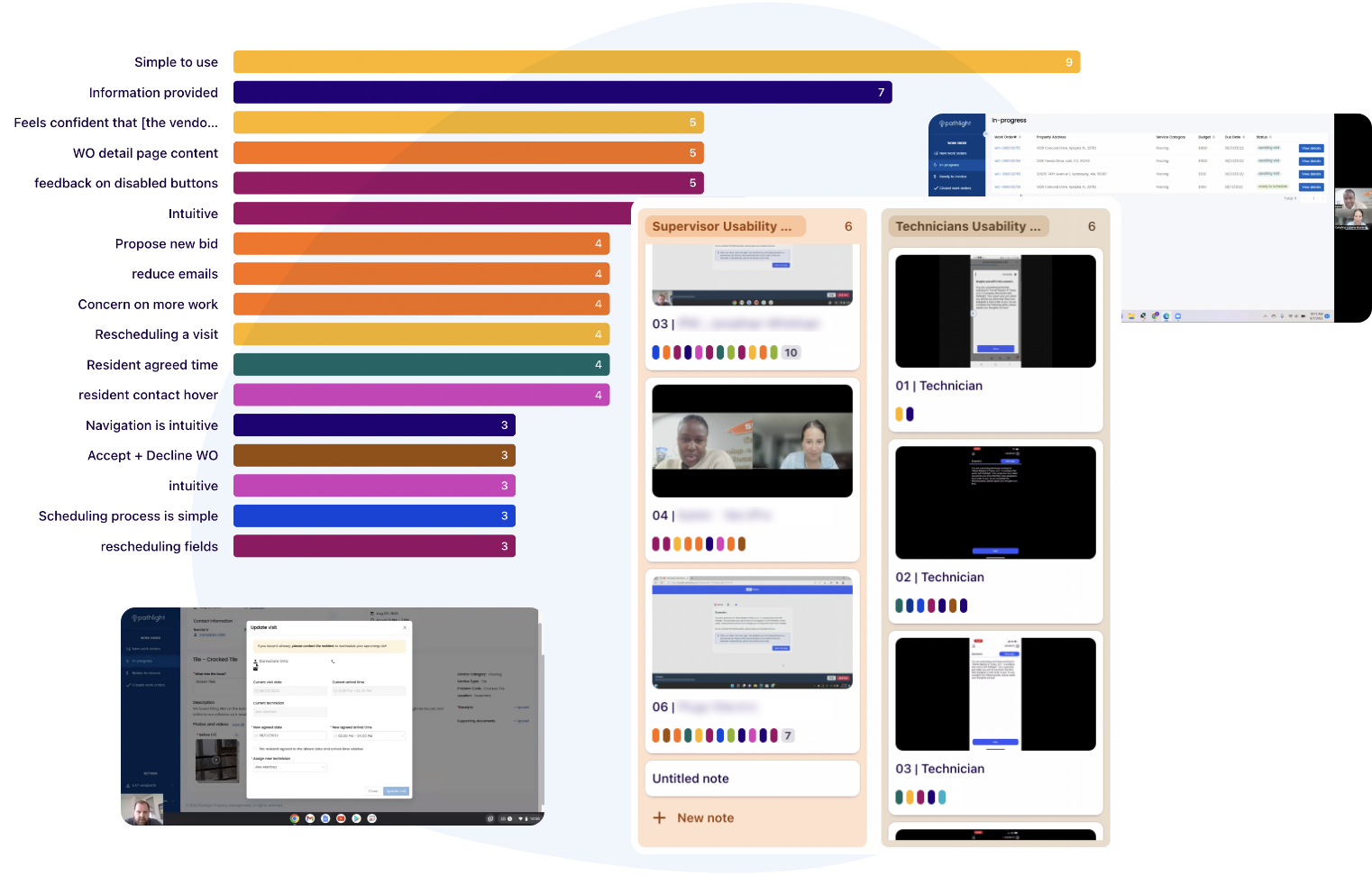
After the release, we continued to listen and iterate via:
1. Data analysis
2. CSAT survey
3. Hotjar feedback
4. Interviews
1. Data analysis
- 869 processed work orders
- 95% of work orders were completed in one visit
- Over the first month, the vendor efficiency increased, decreasing the time spent on each step of our happy path

2. CSAT survey
The CSAT survey served as a benchmark for the future. Even though the feedback was very positive for our MVP, we acknowledge that there was room for improvement
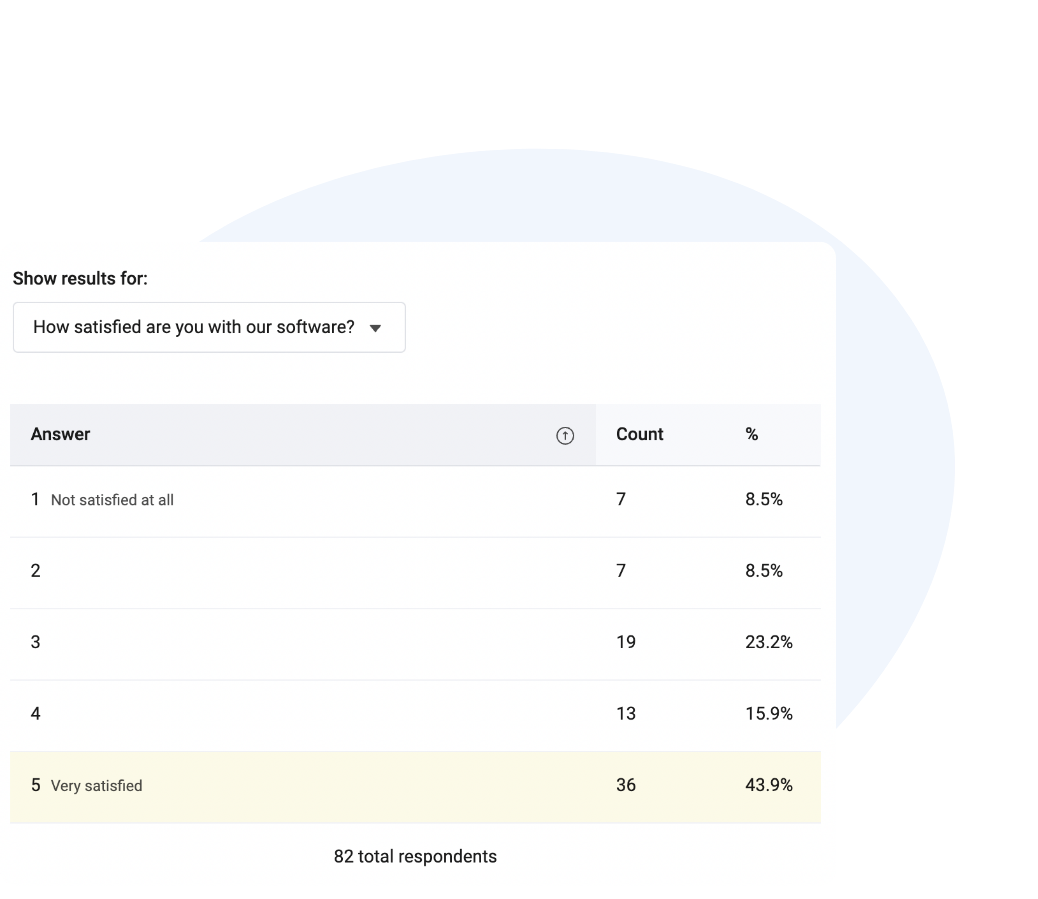
3. Hotjar feedback
With the Hotjar in-app feedback tool, we were able to gather comments on areas of improvement while reviewing our users’ recordings.
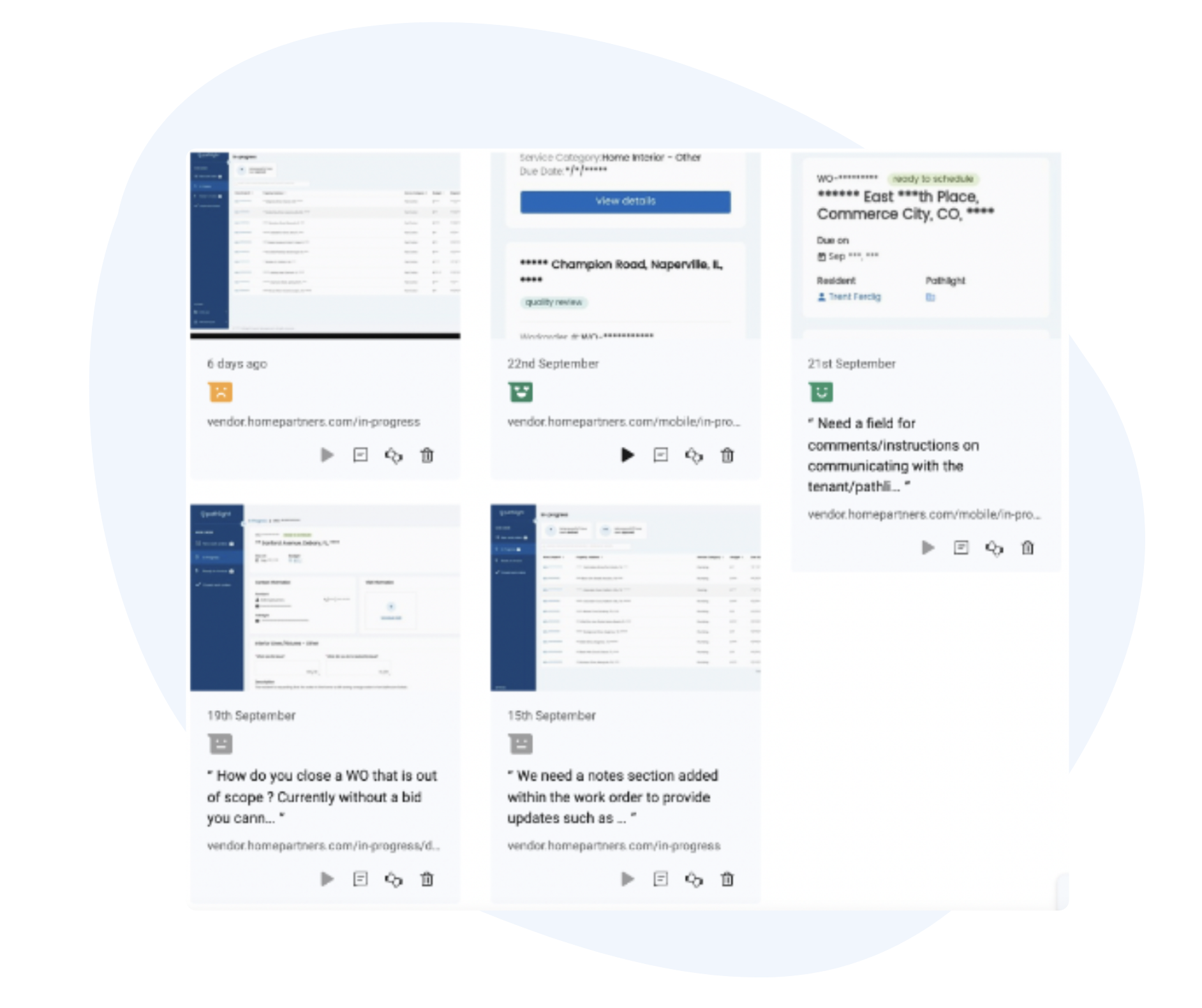
4. Interviews
We interviewed 5 vendors to get qualitative feedback on their experience so far using the vendor portal. We got great feedback on the items our users loved and the areas they didn’t enjoy as much to learn areas of improvement.
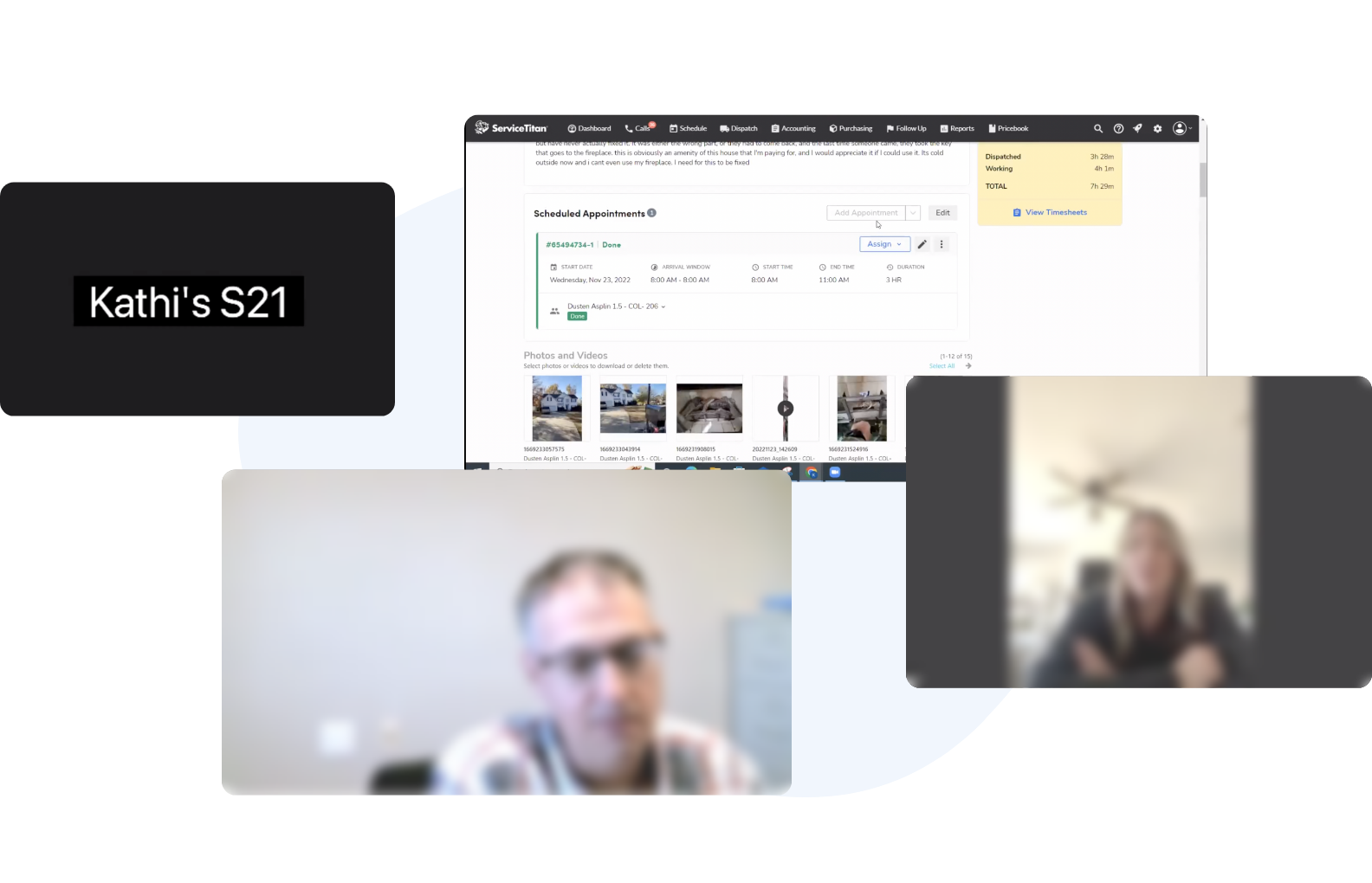
Based on this feedback, we created highly requested features like adding notes to a work order or a dashboard with actionable items. We also iterated the layout and copy slightly to increase visibility and clarity.
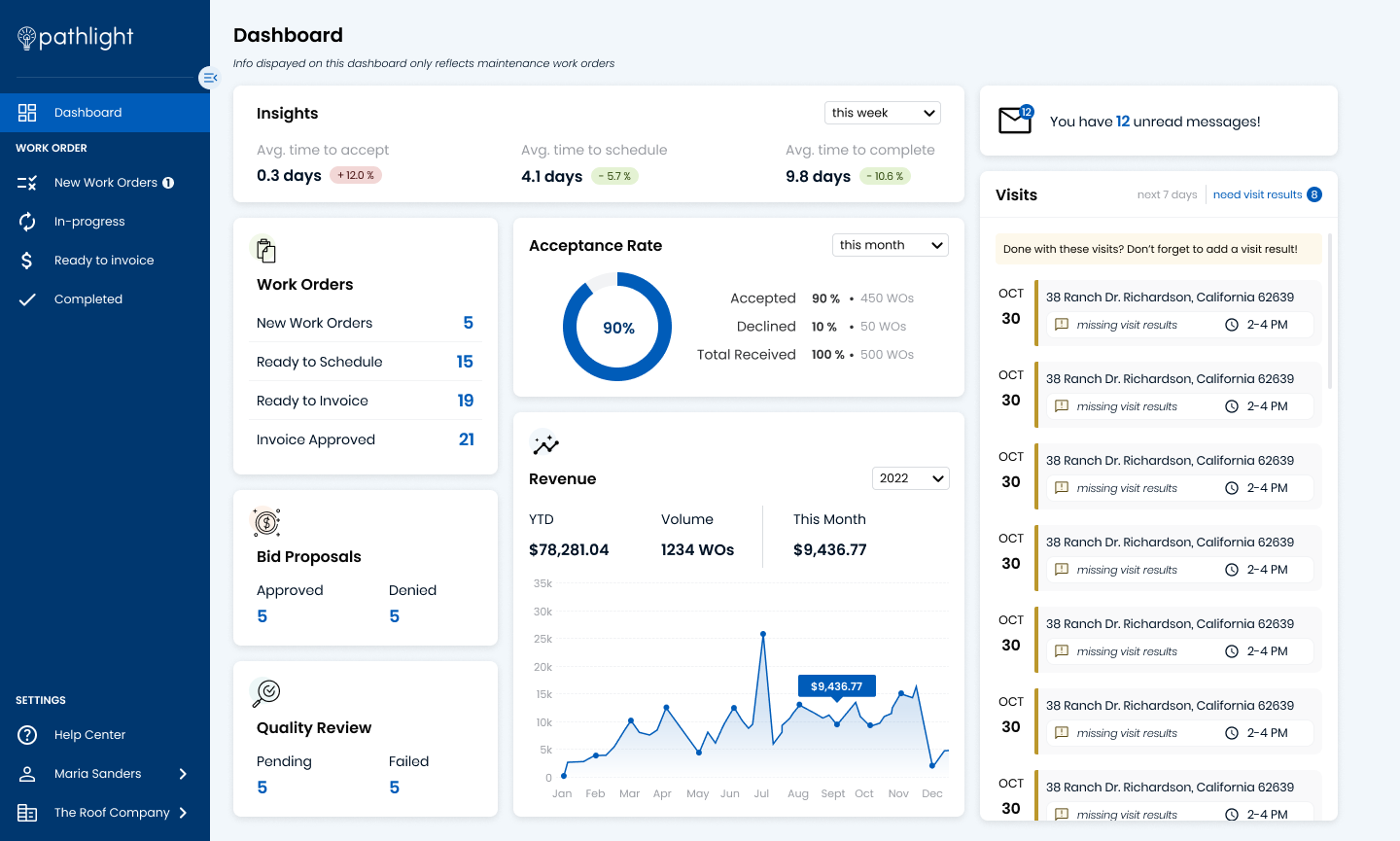
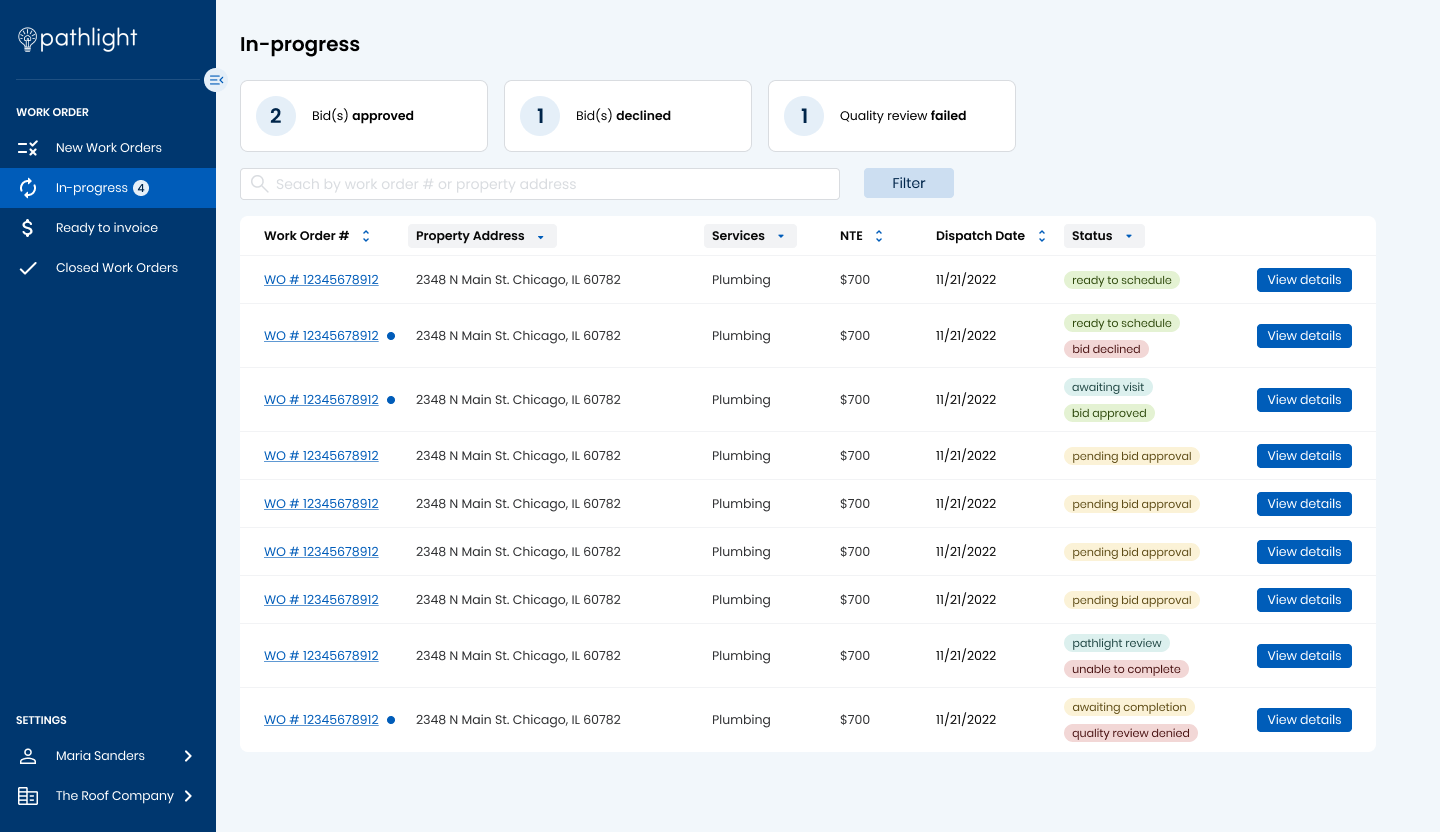
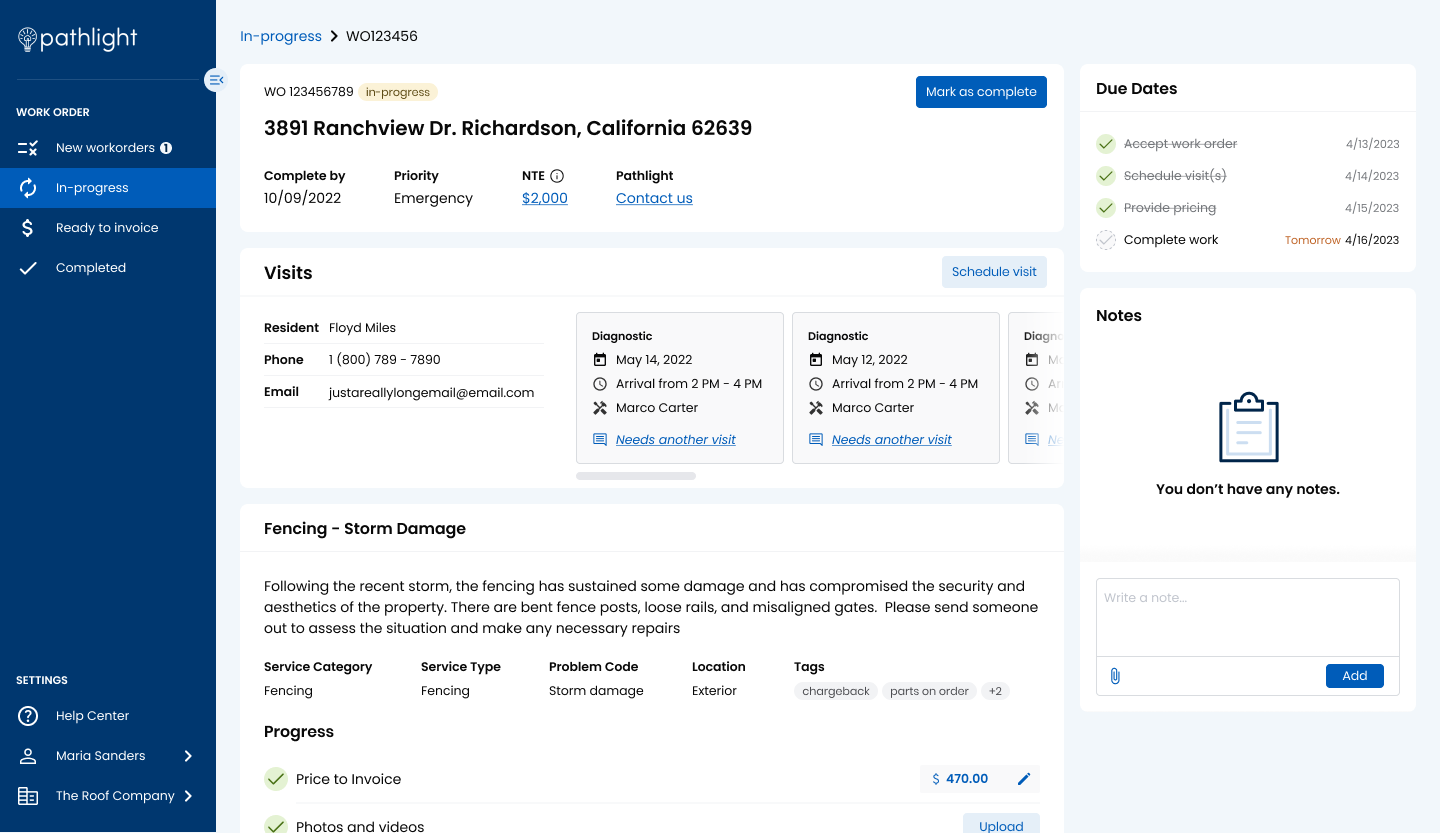
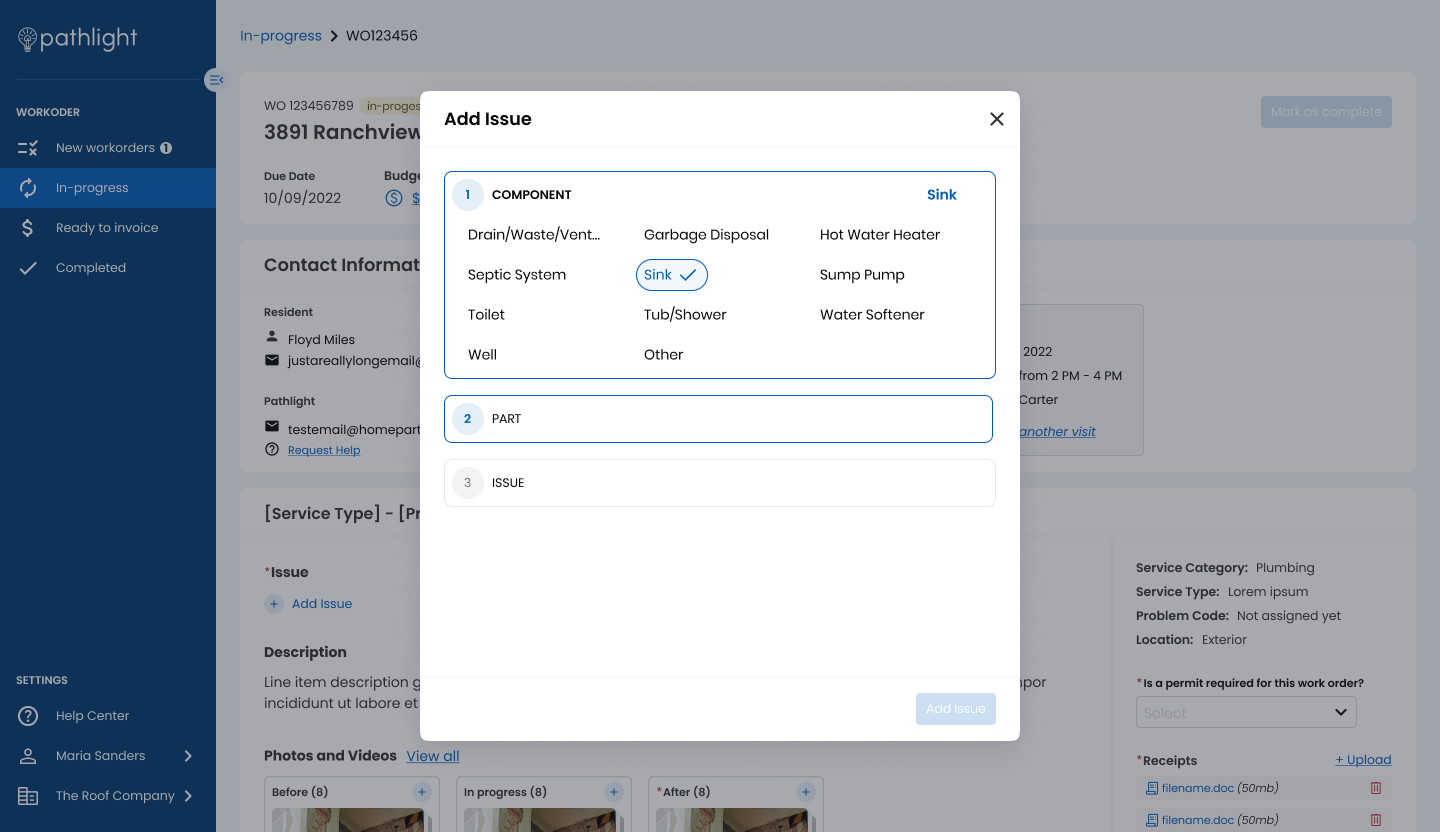
This portal is continuously being updated based on what we learn from feedback loops

